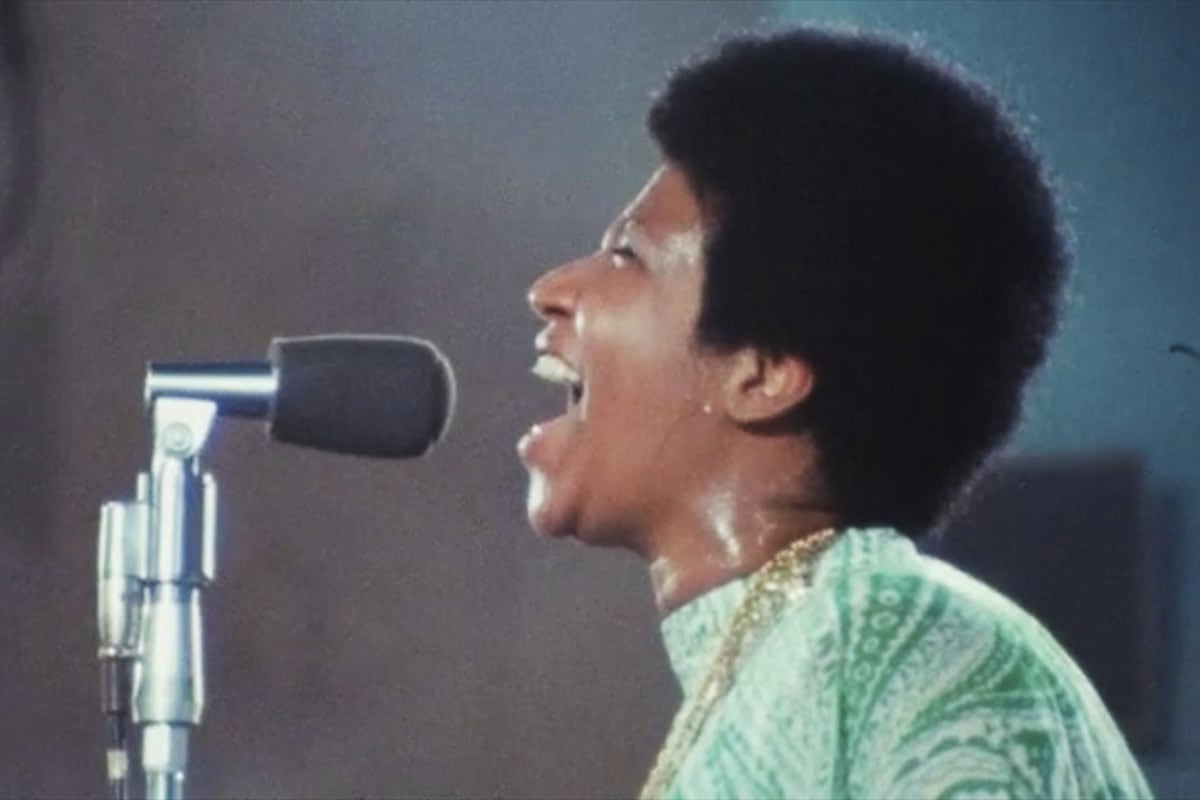Mick Jagger was still somewhat paranoid about the arrest at the country house of Keith Richards, in Redlands, in February 1967. A raid much amplified by the newspapers and which obviously left some sequel in the psyche of the singer of the Rolling Stones.
One morning in March 1968, back in Redlands, Jagger woke up in a near panic to hearing "plop plop plop" in the park,
footsteps that reminded him of that sudden arrival of the police
.
But he was gently reassured by Richards: "It's my gardener in the rain boots splashing in the garden."
Quick to the pen, Jagger began that day to write some of the most powerful lyrics in rock.
If
Satisfaction (I Can't Get No)
spoke of youthful frustration and
Paint It Black
of adolescent pessimism,
Jumpin' Jack Flash
showed a new maturity in terms of lyrics
, while dabbling in the supernatural with a tone oriented towards some dark protection.
Who was this evil being called Jack Flash, the jumping man?
Keith Richards and Mick Jagger were sleeping at the guitarist's country house, when an event sparked inspiration.
AFP photo
Not a psychedelic band
The Stones came from the blues and Rhythm & Blues quarry and except for Brian Jones, a true open-minded musically, the band drank in the sound of black music from Chicago.
The hour of psychedelia, in the mid-sixties, caught them off guard.
Sgt. Pepper's Lonely Hearts Club Band
, the
Beatles'
material, Pink Floyd's material, the Byrds' material, the Grateful Dead and Jefferson Airplane, among others, were going in
a direction that the Stones did not feel
.
Hence, his laborious album
Their
Satanic Majesties Request, composed and recorded between too many days lost due to drug use and a trial of Jagger and Richards for possession and allowing consumption in their home, did not remain. as well as they would have wanted.
For one thing, this sixth record released by the band was produced by the band following the dismissal of their manager Andrew Loog Oldham and the only surviving song from that album, released on December 8, 1967, was She's A Rainbow, a
single
. enriched by the instrumentation of the creative Jones.
Jagger and Richards understood the lesson and took on the young and well-known producer Jimmy Miller (up to that moment he had worked with Spencer Davis Group and Traffic, among others) who was completely honest with the group when he told them: "I'm not here to impress you with any of my musical ideas, I just want his talent to come out and
the Stones to be the Stones again
.
Enough of the psychedelia."
Charlie Watts, Mick Jagger, Keith Richards, Bill Wyman and Brian Jones, the original lineup of The Rolling Stones.
Photo Reuters
The Stones set out to simplify their sound and return to the roots of the blues, but their experience as artists allowed them to rediscover that music from a different emotional world, richer, more personal and above all more fun, according to Richards himself.
By breaking away from that progressivism, the band felt free
and the best example of this change was the album
Beggars Banquet
, a jewel of the stone repertoire.
In a way, they early embraced that change that occurred in the late 1960s, where the peace movement gave way to a darker political climate.
The assassinations of Martin Luther King and Malcolm X, the French May
and the bloody Soviet invasion of Czechoslovakia strongly influenced the mood of youth and music.
Jumping Jack Flash
One night in February 1968, the Stones gathered to rehearse at RG Jones Studios in Morden, Surrey.
Only Brian Jones, Bill Wyman and Charlie Watts arrived on time, and to kill the wait they began to play.
Wyman sat down at the piano and played a riff that Jones and Watts began to follow.
"Keep playing," was the phrase Richards enthused as he and Jagger walked into the studio.
"Don't forget about that reason, Bill," he asked Wyman.
The rehearsal passed, but the riff stayed in the guitarist's head.
Vintage photo.
The Rolling Stones, in the early years in London, Photo AFP
Days later, one morning in Redlands it happened that Jagger woke up scared by noises in the park: "What is that? What is that?" he asked.
"It's my gardener Jack Dyer jumping through puddles in boots."
Jagger found in that episode the protagonist of a new theme and began to write.
According to Richards, they began working on the chorus.
“Jagger was singing Jumping Jack, but there was a gap, kind of awkward, until suddenly he added Flash and that was the perfect phrase within the rhythm and it sounded good for the harmony.
That afternoon we got to work until it was almost finished”, said the guitarist.
On April 20, 1968, the band met at Olympic Sound studios, in Barnes, for the recording that had some peculiar data.
Richards recorded the acoustic guitar on a small tape recorder and played it back on a small amplified rig with a microphone attached to the speaker and recorded on the studio console, resulting in a dirty, distorted sound.
“The whole band thought I was crazy, but they indulged me and it ended up looking good.
The only one who noticed from the start was Jimmy Miller,” said Richards, who recorded
two guitars, twice the bass to give it body and helped by playing the
standing tom-tom to give a broader sound to the rhythmic base.
Brian Jones played rhythm guitar;
Bill Wyman, Hammond organ, and "Stu" Stewart (the Sixth Stone) piano.
The track was finished that day and was released on May 24 as a single with
Child Of The Moon
on the B-side.
The creation of the riff generated a discussion that, although it was not serious, did create discomfort between Wyman and the Jagger-Richards duo, since the bassist claimed it as his own, according to his autobiography Stone Alone (the same title
as
his second solo album).
"We played it for about 20 minutes until Keith and Mick came up and told us to go ahead and we did," Wyman said.
Bill Wyman, retired from the Rolling Stones, says the "Jumpin' Jack Flash" riff is his.
Photo EFE
A letter that speaks of the devil
The lyrics of this song show a new facet of that artist who so well interpreted the frustration and pessimistic disappointment of youth from his lyrics.
Now that cynical tone to the biting Jack Flash reveals a demonic Jagger.
"I was born through a hurricane of fire/ And I howled at my mother in the pouring rain/ But it's all good now/ Indeed it's awesome/ But it's all good/ I'm Jumpin' Jack Flash/ This is awesome, awesome, awesome ...
"I was raised by a toothless bearded witch/ I was raised on a leash on my back/ But it's all good now/ It's awesome indeed/ But it's all good/ I'm Jumpin' Jack Flash/ This is awesome, awesome, awesome...
"I drowned, they washed me and left me for dead/ I fell on my feet and saw they were bleeding/ I frowned before the crusts of a loaf/ I was crowned with a nail right through my head/ But all is well now/ indeed it is awesome/ But it's all good/ I'm Jumpin' Jack Flash/ This is awesome, awesome, awesome."
Mick Jagger, Bill Wyman, Brian Jones, Keith Richards and Charlie Watts.
The original lineup of The Rolling Stones.
AP Photo
Three provocatively intoned paragraphs
confirmed the Satanic affiliation of the Stones
, which would epitomize
Simpathy for the Devil
, the theme with which they will open
Beggars Banquet
, their next album released in December 1968.
This time there was nothing about love, peace and flowers, Jagger at the time explained that the lyrics referred to "someone who after going through a difficult time tries to get out. It's someone who had a difficult experience, but pulls through." .
That is to say, they wanted to relativize all that satanic matter that they were foisting on the subject, although in the end they did not succeed.
The video that accompanied
Jumpin' Jack Flash
with the musicians made up in a climate of dark satanic mass supported the idea of the diabolical spirit of "Jumping Jack".
Richards, always direct, pointed out a long time later and casually that the lyrics referred to the experience they lived when they were persecuted by the police as a result of drug use.
He spoke of the band's resilience.
The last concert of Brian Jones
Ronnie Wood, Mick Jagger and Keith Richards.
"Jumpin' Jack Flash" remains a Rolling Stones workhorse.
Photo Reuters
Twelve days before releasing the single
Jumpin Jack Flash
, on May 12, they performed at the Empire Pool, Wembley, London, having won the
New Musical Express
(NME) poll for Best R&B Band. he had not played live since April 1967, when he closed his tour in Athens.
By the way, that would be Brian Jones's last live concert with the band;
although his last appearance with the group was at the Rolling Stones Rock and Roll Circus, in December 1968.
The feeling that existed at that moment was that
the band was fading away
.
A few days before this show at the NME party, the Daily News published an editorial saying that since 1966, with
Paint It Black
, the band had not had a single in the first places due to this departure from R&B with albums like
Between The Buttons
,
Flowers
and
Their Majesties Satanic Request
.
The article ended with a condemnatory: "They have lost the initial momentum."
The chronicles say that the Stones went up to eat the audience with two furious songs;
they opened with
Satisfaction (I Can't Get No)
and finished off with the premiere of
Jumpin' Jack Flash
that had the crowd howling.
Nick Logan, NME
editor
said: "You could feel the Empire Pool shaking to its foundations as the roar increased.
It was just like the old days, in fact, it was better than the old days.”
“
As soon as I played that riff something happened in my stomach
.
It is one of the best feelings in the world.
You just jump on the riff and it hits you, it dominates you.
An explosion would be the best way to describe it.
It's the one I would go to if I wanted to get closer to the state of Nirvana”, Richards said about this concert, you couldn't be more rocker.
Jumpin' Jack Flash
came out on May 24 accompanied by two promotional videos, both directed by Michael Lindsay-Hogg and shot with the quintet performing;
one of them with
the group made up with bright face paint
and some suggestive lines on Jagger's face was very attractive and produced a sense of mystery about the lyrics of the song.
For example, the close-ups on Jagger, who seems to be stalking the camera, manage to give the performance an evil character.
The song broke that losing streak without first place.
They reached number one in the United Kingdom, Germany, the Netherlands and Australia and number three in the United States.
When more than a million students and workers paralyzed the streets of Paris in May and June of '68 , Jumpin' Jack Flash
could be heard
from the open windows of buildings.
WD
look also
Kiefer Sutherland, after Jack Bauer, his character of 24: "This spy is very different"
Lady Gaga and her first photos dressed up for Joker 2



/cloudfront-eu-central-1.images.arcpublishing.com/prisa/SXWWMN2FTLWNXYCIZP2DR3VND4.jpg)






/cloudfront-eu-central-1.images.arcpublishing.com/prisa/2C5HI6YHNFHDLJSBNWHOIAS2AE.jpeg)



